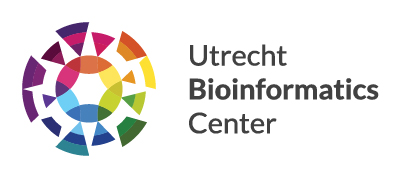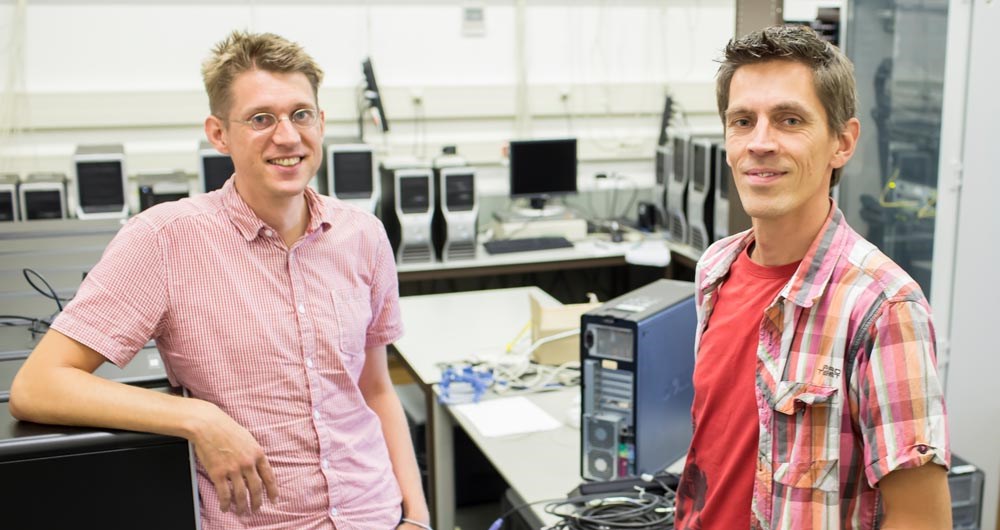Geert Kops wants to find the answer to a main question: how does cell division work at the molecular level? The answer to that question is relevant for our understanding of cancer. Berend Snel’s work focuses on the genomic evolution of complex life processes. In their research, they both deal with bioinformatics, the science that applies computer science to biological data.
DNA sequencing and personalised medicine
Over the past few years, bioinformatics has begun to play an large and essential role in research, because new techniques are rapidly conceived to measure important aspects of life at a larger scale. The best example is DNA sequencing, with which scientists can identify the DNA that cause hundreds of types of breast cancer.
“Diseases such as cancer have genetic origins,” explains Geert Kops, “which is why DNA sequencing has become also popular in the field of medicine. If we can uncover the differences with healthy tissue, then we can identify how cancer developed in a patient, and in the future we will be able to tailor the treatment to the individual. This is known as ‘personalised medicine’. Eventually, we hope to be able to do it as cheaply as possible at a large scale, so that it will become feasible for every patient.”
Eavesdropping equipment
Unfortunately, that is easier said than done at the moment. After sequencing DNA we are confronted with analysing extremely large sets of data. This is a complicated logistical process, because: how does the researcher pick out the right information from the massive amount of data available?
“The principle is the same as that used with eavesdropping equipment,” explains Berend Snel. In his research, he utilised computers from America and Israel that were originally intended to track telephone and e-mail traffic. “Those computers were specially made to match certain words together in order to analyse conversations – more or less the same as what we do with analysing the results of DNA sequencing. In order to do it well, many researchers today need bioinformatics specialists.”
Virtual community
The UBC offers a virtual community of scientists who look for solutions to analyse their research data in fields such as plant biology or cancer research. The UBC brings together bioinformatics specialists from these diverse groups to help them network and learn from one another. This makes them more visible to other groups, and makes it easier to see who is working on which topics.
“We desperately need that right now,” says Geert, “because in the research community it’s all too common that there is a bioinformatics specialist only 100 meters away with whom you could collaborate on your research, but you may not even know that he exists. That’s only logical, because nobody can know everyone at all 300 research groups at Utrecht University. So that is why it is so important that we have an organisation like the UBC, to increase awareness of all of those hard-working people. That way, you don’t have to go all the way to Germany or America to find the right expertise, because there is probably someone just around the corner.”
Intriguing questions
That is exactly how the collaboration between Geert and Berend occurred. Geert studies cell division from an evolutionary perspective, but he needed bioinformatics analysis in order to make predictions about how cell division came about. One of Geerts’ PhD students worked in Berend’s group for two years in order to use data analysis to predict which functions certain sections of proteins perform. The doctoral candidates who combine bioinformatics and biology also benefit greatly from discussions with groups that are specialised in both disciplines.
“That is really great,” says Berend, “because the people from Geert’s group have intriguing questions and come from perspectives that we would not have seen on our own. We take advantage of one another’s knowledge, which is the best form of cooperation.”
New insights
Initiatives such as the UBC build on technological developments within the scientific community that make it necessary to utilise other people’s expertise, because it is simply too expensive and requires too much specialised expertise to do everything yourself. The UBC provides advice, helps look for solutions and brings together people who can help one another.
Geert concludes: To me, the cooperation with Berend means that I have started looking at evolution at a much more molecular level. Cancer is an evolutionary process, and a better understanding of those processes in evolution have made me appreciate how complex and interesting the evolution of cancer truly is.”

